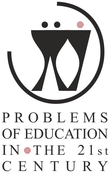CONSTRUCTIVISTIC PATHS IN TEACHING PHYSICS: FROM INTERACTIVE EXPERIMENTS TO STEP-BY-STEP TEXTBOOKS
| Title | CONSTRUCTIVISTIC PATHS IN TEACHING PHYSICS: FROM INTERACTIVE EXPERIMENTS TO STEP-BY-STEP TEXTBOOKS |
| Publication Type | Journal Article |
| Year of Publication | 2015 |
| Authors | Karwasz, GP, Służewski, K, Kamińska, A |
| Journal | Problems of Education in the 21st Century |
| Volume | 64 |
| Start Page | 6-23 |
| Pagination | Discontinuous |
| Date Published | April/2015 |
| Type of Article | Original article |
| ISSN | 1822-7864 |
| Other Numbers | ICID: 1154011 |
| Keywords | cognitive sciences, educational systems, interactive exhibitions, simple experiments, teaching physics |
| Abstract | Teaching Physics, in-between theory and technical applications is nowadays a tedious task. Apparent abundance of web resources makes access to information easy, but its use by pupils is quite unclear. These difficulties, added to less importance held by physics nowadays than in the last decades, inside the national educative system, caused in many countries a fall of interest in studying science and technology. Within several national and international programs, involving mainly Poland and Italy, various recipes for school education at lower and higher secondary level were developed in our group. All these recipes were oriented towards real experiments and constructing the discovery paths with pupils. The school (and extra-scholastic activities for primary-age pupils) included: collections of simple experiments “Physics and Toys”, interactive lectures for children, itinerary exhibitions, innovative textbooks inviting the reader to a heuristic dialog, computer-guided experiments, and collections of problems in physic solved step-by-step. We resume some of these implementations and draw main results. Actions were undertaken with three cultural goals: trigger a wide interest in physics through “Fun in Physics” activities, improve didactical efficiency at schools, induce students’ initiative in an independent discovery of science. In detail, for a lower secondary school simple interactive experiments on electromagnetism were introduced, and a textbook on mechanics. For higher secondary schools – a textbook on modern physics and computer-guided experiments; for children aged 5-10 – interactive lectures on mechanics, electricity, acoustics. Evaluations were performed by qualitative and quantitative measures, in Poland and Italy, in collaboration with several teachers and PhD students. All these, constructivist applications show an improved efficiency and find positive evaluations among teachers and pupils. However, partial and sporadic actions do not lead to significant results. Only conjugated implementations of new experimental tools (real objects) and didactical methods (inquiry-based teaching) shows achievements congruent with the Lisbon EU declaration on Knowledge-based Societies (EU Commission White Paper: Education and Training, 1995). |
| URL | http://oaji.net/articles/2015/457-1432232064.pdf |
| DOI | 10.33225/pec/15.64.06 |
| Refereed Designation | Refereed |
| Full Text |
